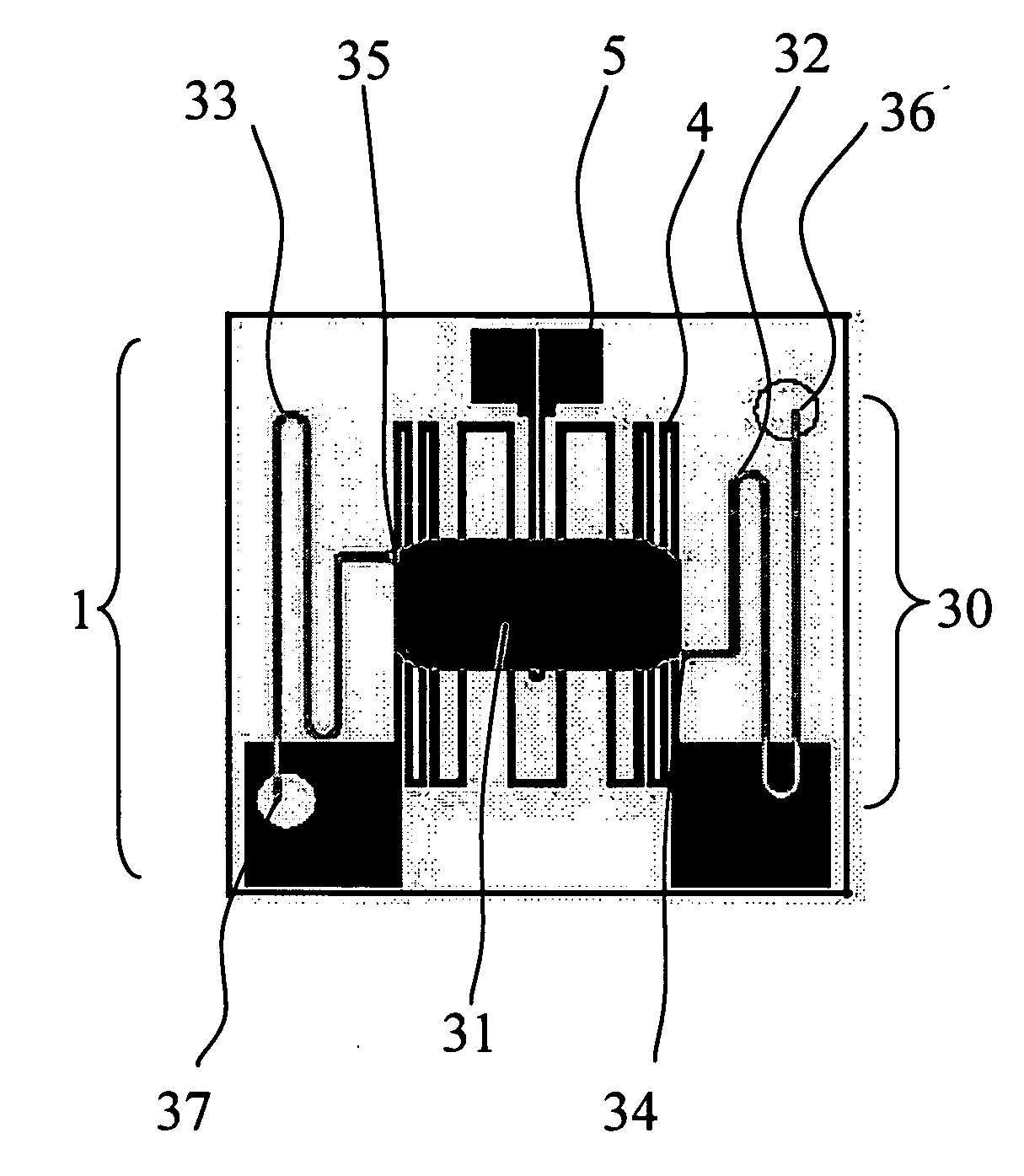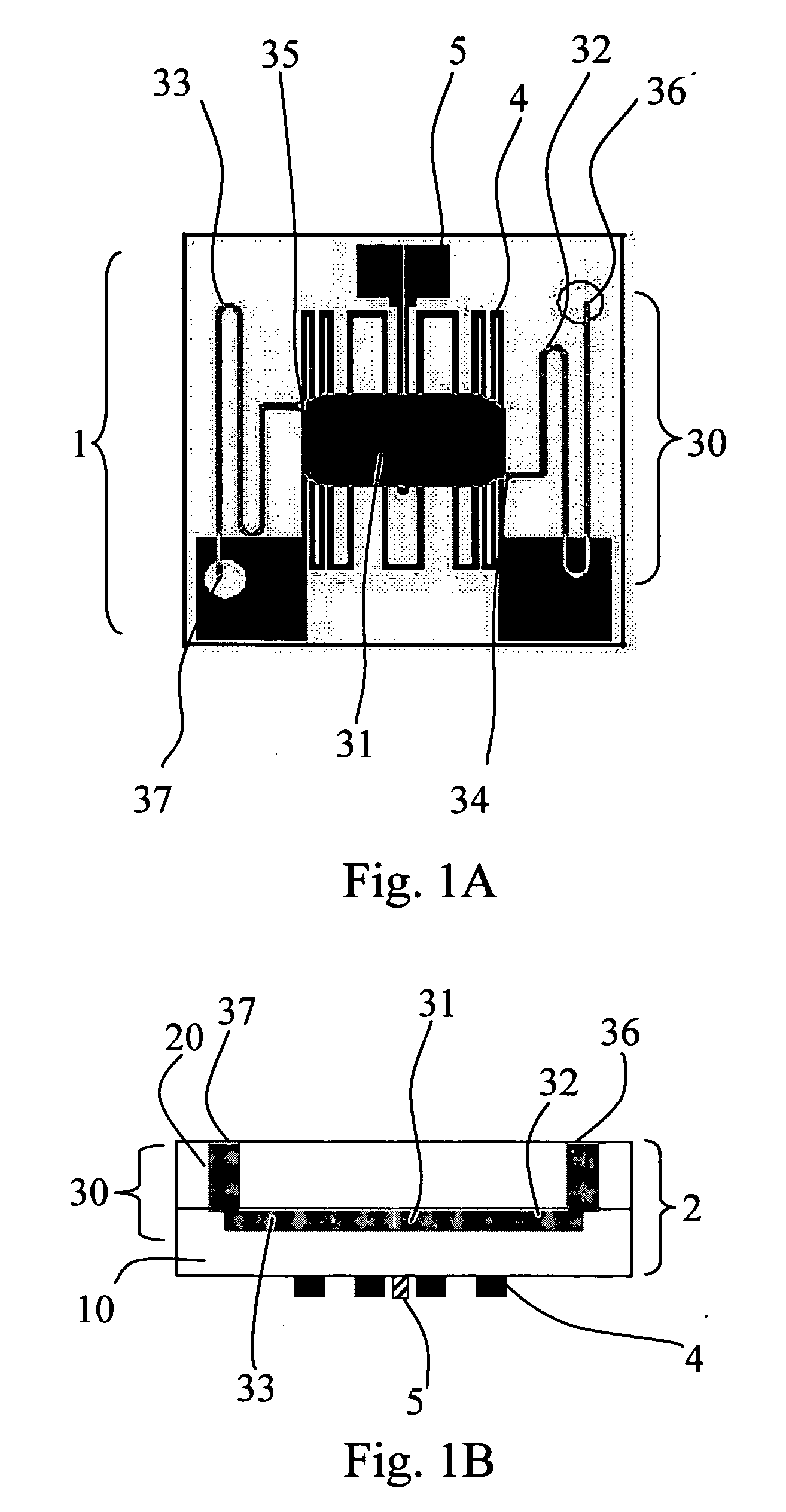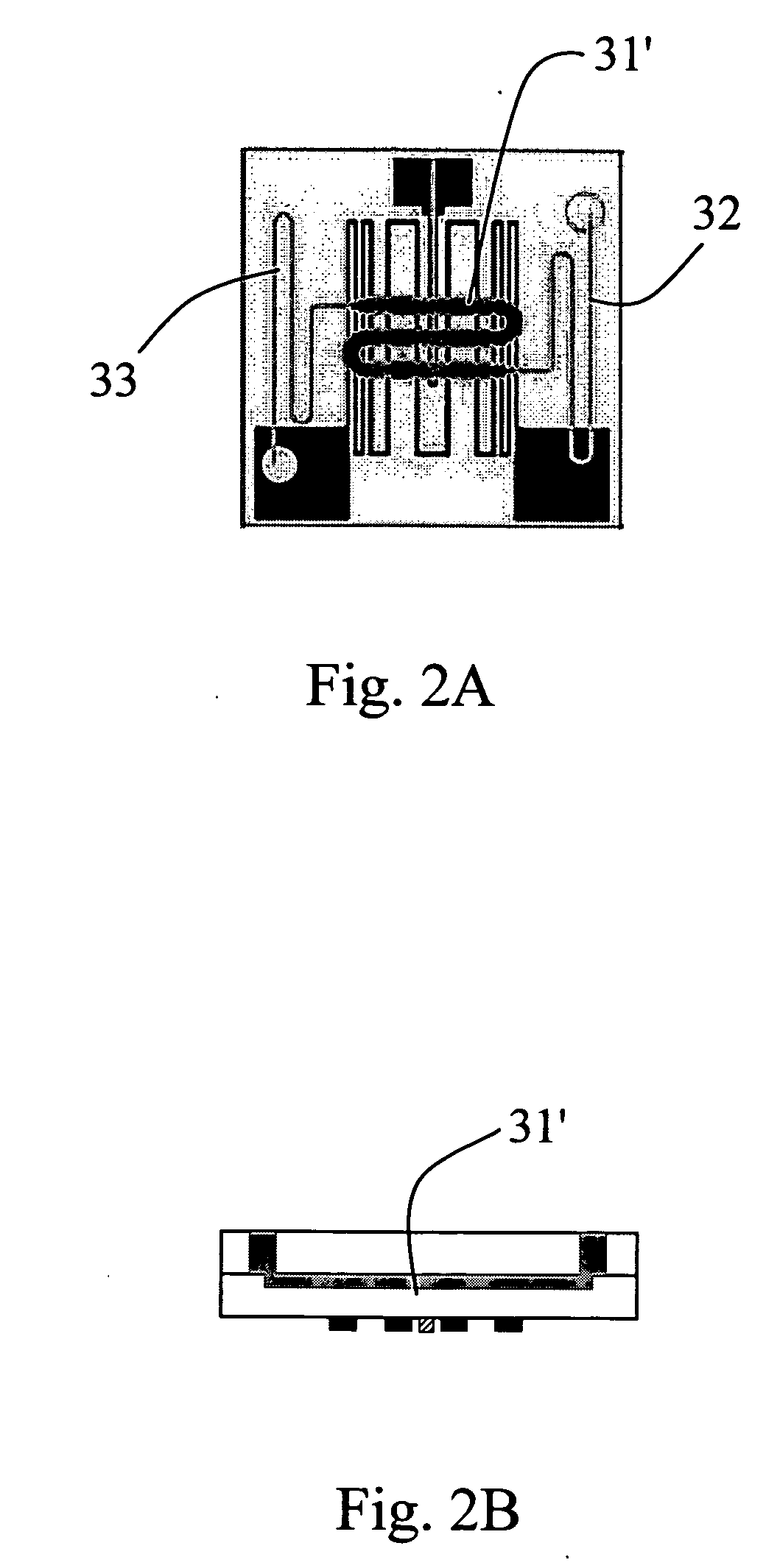Self-sealing high-temperature biochemical reaction apparatus and method for the same
a biochemical and high-temperature technology, applied in the direction of chemistry apparatus and processes, chemical/physical/physical-chemical processes, laboratory glassware, etc., can solve the problems of complex whole structure of this design, failure of reaction, and change of the percentage of pcr reaction reagent composition, etc., to achieve cost reduction, simple structure, and easy to implement
- Summary
- Abstract
- Description
- Claims
- Application Information
AI Technical Summary
Benefits of technology
Problems solved by technology
Method used
Image
Examples
Embodiment Construction
[0022] The self-sealing high-temperature biochemical reaction apparatus of the present invention adopts a special microfluidic channel design and temperature gradient control to make some portion of reaction fluid as a self-sealing material to prevent the reaction fluid from being vaporized to adversely influence the reaction result. Besides, the present invention can simplify the sealing problem and avoid the complicated problems encountered for separating oil and water and the mechanical motion to plaster gummed tape, and improving operability of the microfluidic chip as well as making automation of the microfluidic chip become possible. More specifically, the present invention coordinates temperature gradient made by the heater with the size of the microfluidic channel to make most reaction reagent in the microfluidic channel placing in a primary reaction temperature area and less reaction reagent placing in a low-temperature non-vaporization area so as to serve as a sealing mate...
PUM
 Login to View More
Login to View More Abstract
Description
Claims
Application Information
 Login to View More
Login to View More - R&D
- Intellectual Property
- Life Sciences
- Materials
- Tech Scout
- Unparalleled Data Quality
- Higher Quality Content
- 60% Fewer Hallucinations
Browse by: Latest US Patents, China's latest patents, Technical Efficacy Thesaurus, Application Domain, Technology Topic, Popular Technical Reports.
© 2025 PatSnap. All rights reserved.Legal|Privacy policy|Modern Slavery Act Transparency Statement|Sitemap|About US| Contact US: help@patsnap.com



